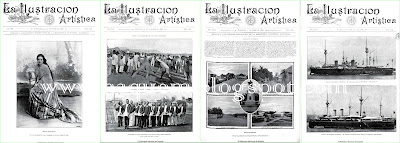When we got to the protest
zone at Commomwealth Avenue, only the contingents from Southern Tagalog and the
indigenous peoples of Capas,Tarlac, and Mabalacat and Porac, Pampanga so far have
arrived, patiently sitting on the sidewalks, seeminly unperturbed by the threat of a heavy rain..
We sat down with the Aytas
from sitio Pisapungan of barangay Santa Juliana of Capas town in Tarlac. Their
sitio leader informed us they came in five jeeps. Pretty soon, we were talking about how life is in their village.
The women were holding a
“patalsikin si Noynoy” placard of the ACT Party-list. Other indigenous people
carried the Katribu group streamer proclaiming “US-Aquino Kontra Katutubo.”
But from their stories, we
got to know that they came to the rally to convey their aspirations to the
government, not to agitate for the ouster of the president.
Barangay Santa Juliana is
located on the mountainside, and the Pinasapungan River runs between several
sitios. The river is almost two
kilometers wide, which they have to swim during the rainy season to get from
one side to the other. They are happy to say though that the river teems with
fish for their food.
They earn their living through vegetable farming, and their main crop is the “puso” from a banana
variety that has seeds. They raise also other vegetables like kamote and taro.
They plant two traditional rice varieties that do not need much water to
thrive: the binundok (hard) and binikol (soft).
They have a school for
around 200 children, and the teachers stay at the barangay during schooldays,
going home only during the weekend. The
school is only up to Grade 4. For further schooling, the children have to go to
the town. Some of them have finished high school.
They also suffered the
wrath of Mt Pinatubo. They said they rebuilt their homes with the help of an
international organization, a Korean group. Up to now though, electricity has not reached
their area.
Their culture, they affirmed,
is still very much alive. They have not lost their traditional music and their
talipi dance. The women still roll tobacco leaves for their customary way of
smoking with the lighted end inside their mouth.
All of us were not able to
hear President Aquino’s State of the Nation Address, where he
highlighted the major achievements of his administration for the last five
years, resurrected the ‘sins’ of the Gloria Macapagal Arroyo administration,
swiped subtly at an unnamed target, obviously Vice-President Binay, and, like a high school valedictorian, praised
and thanked almost everyone including his household help and his hairdresser
except ex-Cabinet member Binay.
On the other hand, the
Aytas or kulots would have wanted Aquino to hear their social services ‘wish
list’: better educational opportunities
for their children, carabaos for transporting their crop harvests to the town
market, better access roads and a bridge across the river, and electrification
of their barangay.
Aquino said, “Ang agenda:
ayuda, kaalaman, kasanayan, at kalusugan para walang maiiwan. Ang isa sa mga
mekanismo: Pantawid Pamilyang
Pilipino Program. Sa Pantawid Pamilya, kapalit ng tulong sa mga benepisyaryo,
pangunahin nilang dapat tutukan ang pag-aaral ng mga anak. ... Siyempre, bukod
sa Pantawid Pamilya, may kontribusyon din ang Alternative Learning System para
masigurong pati ang mga katutubo at street children ay hindi napapag-iwanan.”
Will the Aytas of Santa
Juliana be able to benefit from these programs?
“Ayon nga po kay Bro.
Armin,” the president said, “ang suma-total ng naipagawa nating mga classroom
at na-hire na guro ay higit pa sa pinagsama-samang nagawa mula sa nakalipas na
20 taon bago tayo manungkulan.”
Will the Santa Juliana
school initially expand to Grade 6 and eventually to Grade 12 for the katutubo
children? Aquino made this clear: “Nagpatupad
tayo ng K to 12 dahil hindi praktikal ang pagsisiksik ng kaalaman sa 10-year
basic education cycle.”
The president narrated: “Noong
2011 po, inimbentaryo natin ang mga sitio; tinukoy natin kung sino pa ang
nangangailangan ng kuryente. Gawa ng Sitio Electrification Program,
nakapaghatid na tayo ng liwanag sa 25,257 sitiong natukoy sa imbentaryong ito.
Dagdag pa rito, dahil sa paggamit ng solar at iba pang teknolohiya, kahit
malayo o liblib na lugar, nagkakakuryente na rin. Ngayon po, 78 percent na ng
target ng SEP ang energized na. At tinitiyak sa atin ng DOE na bago tayo bumaba
sa puwesto, lahat ng naitala noong 2011, may kuryente na.”
Is Santa Juliana included
in the last 22% of sitios that will benefit from the Sitio Electrification
Program during his last year in office?
The president asked: “Di
na nakakagulat na nitong nakaraang taon, tumaas ng 27 percent ang car sales sa
Pilipinas. ... Sa dami ng nakakapagpundar ng bagong sasakyan, dalawa po sa
pinakamalaking kompanyang nagbebenta sa Pilipinas ay inaabot ng dalawa’t
kalahati hanggang tatlong buwan bago makapag-deliver ng kotse.”
The Santa Juliana folks do
not dream of cars. They only want carabaos to help ease the burden of manually
transporting their goods to the marketplace. They also dream of the day that
they will no longer plod through muddy roads during the rainy season, or swim
across the big river when going to from one sitio to another. No big-ticket infrastructure needed here like
the Cavite-Laguna Expressway that he inaugurated recently.
President Aquino boasted:
“Mula 2010 hanggang 2014, nagtala tayo ng average GDP growth na 6.2 percent;
ito ang pinakamasiglang yugto ng ating ekonomiya sa loob ng 40 taon. Kung aabot
po tayo sa 6.8 percent ngayong 2015, makakamtan natin ang pinakamataas na
six-year average growth sa loob ng halos anim na dekada.”
The benefits from this
growth, sad to say, have not trickled down to Santa Juliana.



























